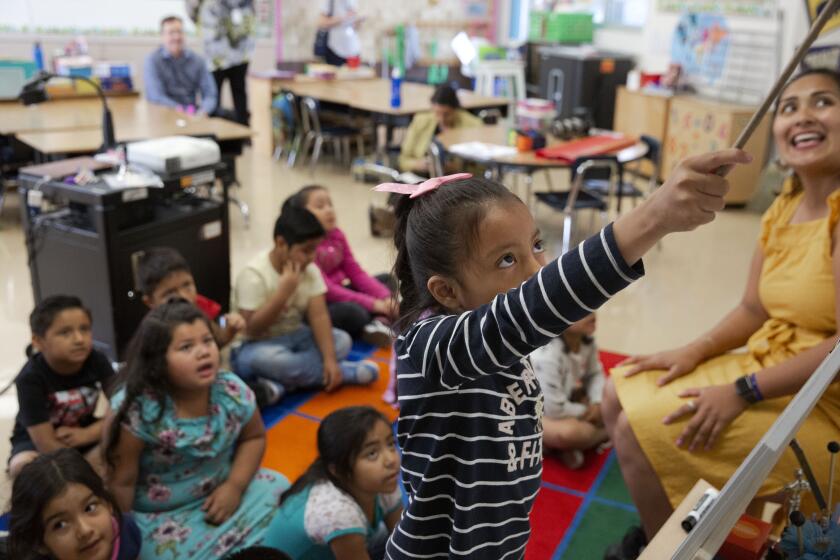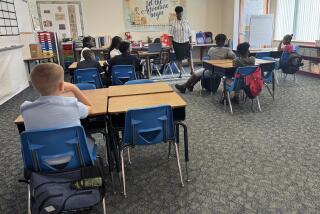KIPP charter schools to close three under-enrolled campuses, angering some parents
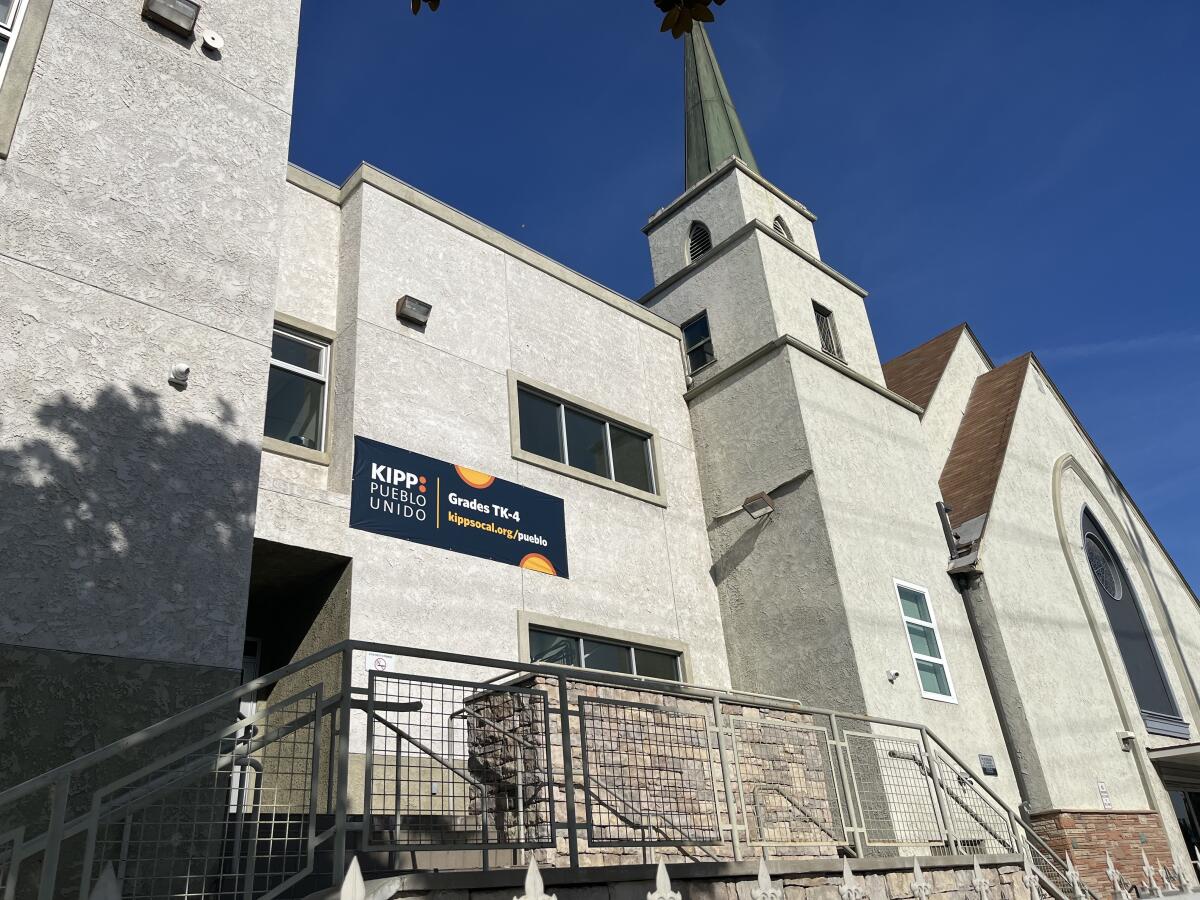
KIPP SoCal Public Schools, which operates 23 charter schools, will close three campuses, a setback for an organization that had grown steadily and is considered a leader in the field.
The shutdowns, which have angered some parents and disappointed many, will take effect at the end of the current school year. The overriding cause is low enrollment â a problem exacerbated by the COVID-19 pandemic and local opposition to charter schools.
âThese schools, all launched during the pandemic, faced intensified challenges linked to the global event, nationwide enrollment declines, diminishing school-age populations and temporary and permanent facility constraints,â organization leaders said in a statement.
Parents and staff learned of the closures late Monday and were still coming to grips with the news as they arrived to school Tuesday.
âI was very angry â very, very upset â disappointed, because we didnât get a warning,â said Gina Alonzo, after dropping off her 7-year-old son at KIPP Poder in Montebello. âWe didnât get a notification of what was going on â the issues that they were having.â
Alonzo said she loves the KIPP program, and that her son has been reading and writing since kindergarten.
âWe were grown as a community here,â she said. âEverybody knows each other. This is all my son knows. So Iâm upset and Iâm thinking about the trauma that this is going to cause him.â
The school should have alerted parents months ago, she added, when they would have had time to consider other options for the current year.
Declining enrollment is affecting school systems across California and within L.A. County â including Los Angeles Unified, which has largely resisted shutting down campuses. Parents, community groups and teachers firmly oppose campus closures because schools are centers of a community, typically for generations.
The state added school for 4-year-olds, which benefited enrollment figures but did not offset an overall decline.
While the roots of charters donât run as deep, these schools have a strong following, serving about 1 in 5 students who attend public schools within the boundaries of L.A. Unified, the nationâs second-largest school system.
The vast majority of KIPP SoCal schools are in L.A. Unified boundaries, although there also are campuses in Compton and San Diego as well as the one in Montebello.
Montebello parent Uriel Gonzalez researched available schools in depth before choosing KIPP. He said his partner and her sisters received an inferior education in a nearby traditional public school. Heâs worried about finding another KIPP because, as a Montebello resident, he wonât have priority in a charter located within a school system outside Montebello.
Charters are privately operated public schools. Most are nonunion, which has generated antipathy from unions. Charters vie for students with district-operated schools â which has become an even higher-stakes competition with decreasing enrollment.
Twenty years ago, L.A. Unified had close to 740,000 students and was building schools as fast as it could. District-operated schools currently enroll about 420,000 students â a decline caused by reduced immigration, families moving out of L.A., lower birthrates â and, until recently, the growth of charter schools.
Besides KIPP Poder, the other campuses to be closed are KIPP Generations Academy in Gardena and KIPP Pueblo Unido in Maywood.
âAnticipated declines in the school-age population, coupled with mounting political pressures from anti-charter factions, have regrettably rendered these schools unable to stabilize and recover, despite substantial efforts to keep them operational,â officials said.
KIPPâs board is expected to formally approve the closures at its Dec. 14 board meeting.
State funding is based on enrollment and itâs hard to maintain a building, a full staff and offerings when the number of students falls below a certain threshold.
A classroom might have to be maintained whether there are 28 students or 20, but the difference in revenue is more than $100,000, according to KIPP, which estimates that a middle school needs about 425 students to meet costs. The figure for an elementary school is 520 students.
Enrollment at KIPP Pueblo Unido, serving transitional kindergarten, called TK, to grade 4, is 288. At KIPP Generations, serving grades 5 to 7, itâs 158. At KIPP Poder, serving grades TK to 2, itâs 207.
KIPP schools typically start with one or two grades and then gradually add more, growing enrollment. Originally, the three schools had aimed to reach enrollment of about 1,000 students each.
KIPP has pledged to work with families on their enrollment options â which could include other KIPP schools, a few of which have a waiting list.
Across L.A. Unified, 17 charters have closed since the 2019-20 school year and low enrollment is a typical common denominator.
Some of the most successful charter groups have closed one or more campuses, including Alliance for College-Ready Public Schools and Green Dot Public Schools â and now KIPP.
The difficulties for the KIPP charters have extended beyond enrollment.
KIPP Pueblo Unido was planning to build its own campus in Cudahy â for which KIPP purchased a large parking lot from the city. But a group called Cudahy Alliance for Justice challenged the safety of the site while also raising concerns about traffic and community disruption. The group sued and successfully forced what would have been a longer and more costly environmental safety process.
KIPP ultimately canceled the project â after investing $8.4 million â a disappointment to parents who have endured imperfect temporary locations, splitting the school between rented space at a church and surplus classrooms at a local L.A. Unified campus. KIPP hopes to find a buyer for the Cudahy site.
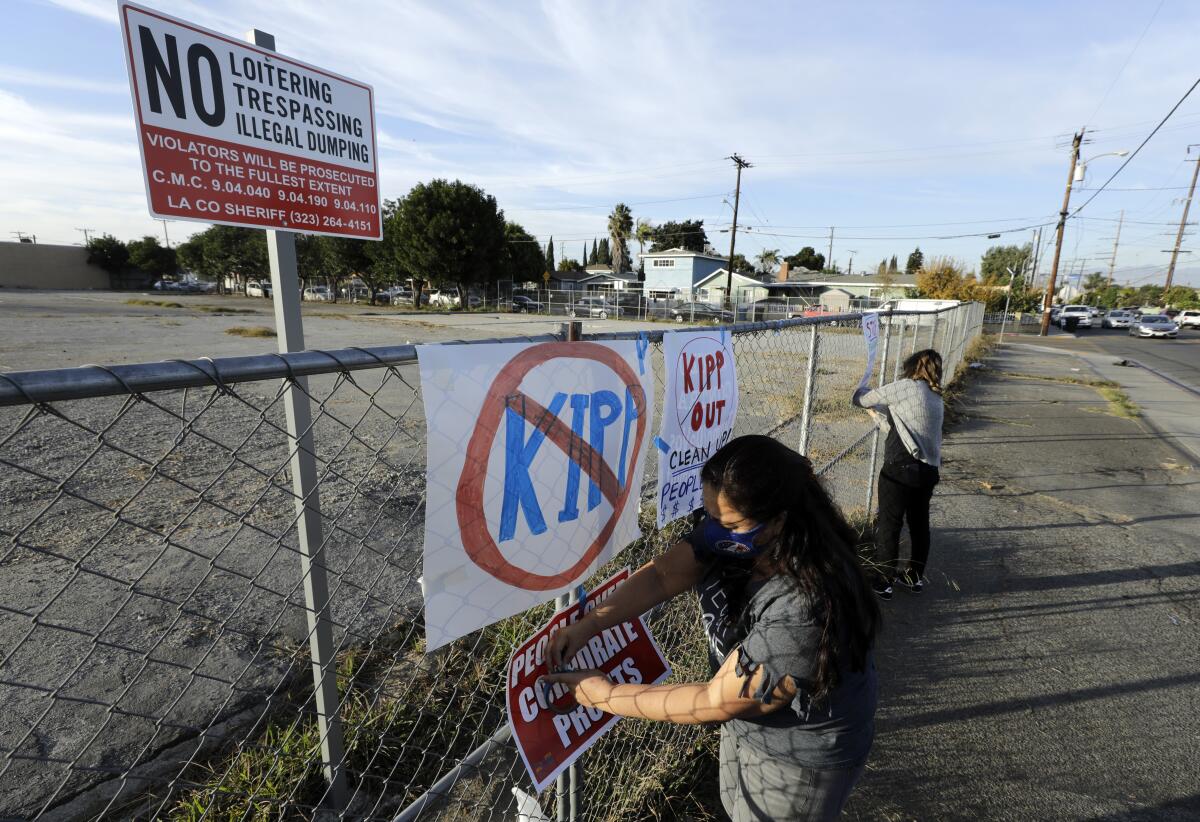
The Montebello campus, which shares space at a traditional school run by Montebello Unified, also has faced resistance, including periodic demonstrations organized by local parents and staff from the competing district-run schools, which were compelled under state law to share their campuses with KIPP.
Gonzalez recalls having to make his way through picketers to attend an event for KIPP students and parents. Some neighborhood families put up signs opposing KIPP in their yards, said Joanna Belcher, KIPPâs chief external communications officer.
For staff and families with ties to neighborhood schools, the arrival of a charter can present an existential threat, so the tension is understandable though unfortunate, said Montebello interim Supt. Mark Skvarna.
In recent years, district enrollment has declined from about 30,000 to about 20,000. Skvarna added that he sympathizes with families at any school that is forced to close, because families have to leave behind important connections.
Underscoring that point, parents interviewed Tuesday outside adjacent Gascon Elementary â the neighborhood school operated by Montebello Unified â expressed pride and satisfaction in their own school.
Another factor that spurred opposition to the charter was Montebelloâs shaky finances. Poor management had put Montebello Unified on the verge of bankruptcy, a problem Skvarna was brought in to fix.
âWhen we were trying to stabilize the districtâs finances, I thought, what the heck good is it to bring in a charter and lose another 600 or 700 kids,â Skvarna said.
Montebello Unified refused to authorize the charter, but the L.A. County Board of Education overrode the decision, forcing Montebello Unified to become a reluctant landlord.
For the KIPP schools, operating during the pandemic and then reopening schools posed other hurdles.
KIPP Pueblo Unido had operated its lower grades for only eight months when the pandemic hit. Its upper grades were launched while in-person learning was shut down. Teachers and students lacked the benefit of established learning relationships once they could no longer interact in person.
KIPP Poder started in August 2021, the first full year back for in-person schooling, a challenging period of adjustment for all schools, let alone new ones.
Recent years also have included a notable success for KIPP, which bought out a motel â adjacent to a campus â that was frequently used by prostitutes and drug addicts.
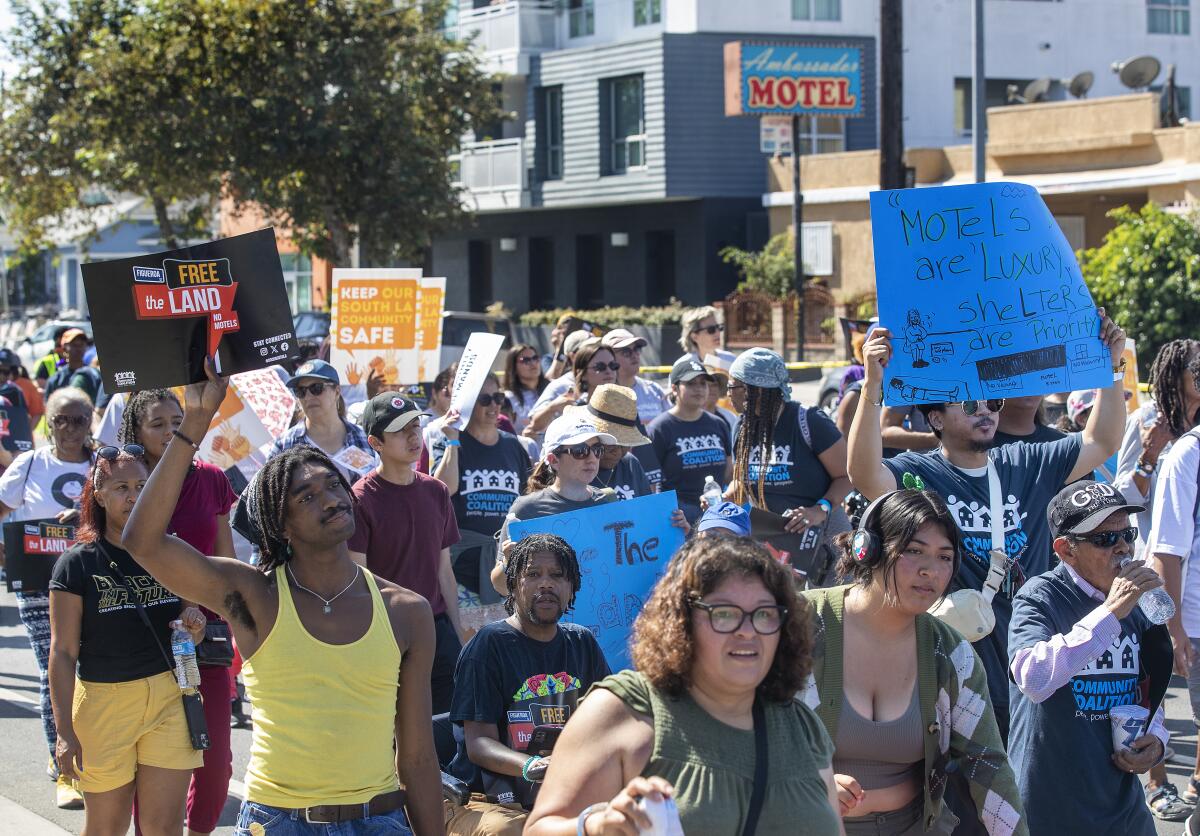
KIPP has expanded this effort to target other problem motels in the Figueroa Street corridor south of downtown, in partnership with local officials, local businesses and community groups.
In all, there are more than 200 independent charters within L.A. Unified, more than in any other school system in the nation.
More to Read
Sign up for Essential California
The most important California stories and recommendations in your inbox every morning.
You may occasionally receive promotional content from the Los Angeles Times.
